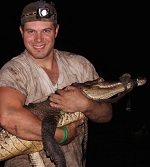Graduate Faculty Research Interests
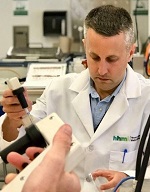 Virology
Virology
Dr. Justin Anderson
My lab is broadly interested in viruses and how they behave. In particular, we are currently building a library of bacteriophages that infect the bacteria Microbacterium foliorum and Gordonia rubripertincta with the goal of understanding which virus genes contribute to virulence and host preference. I am also interested in understanding how environmental contaminants affect the ability of mosquitoes to transmit viral pathogens

Amphibian Biology
Dr. Christopher Beachy
Faculty Bio
We work on two related areas: (1) life history biology and (2) metamorphosis. 80% of animal species have a life history that includes a metamorphosis. We use surveys and experiments with amphibians that allow us to understand the relationship between metamorphosis and life history evolution. We perform several kinds of studies but in particular we use (1) time-series collections of animals that allow us to elucidate life history parameters like growth rate, size/age at metamorphosis, and size/age at sexual maturation and (2) laboratory growth experiment with amphibian larvae wherein environmental variables that affect growth are manipulated and the outcome on timing and size at metamorphosis are observed.

Insect Evolutionary Ecology
Dr. Janice Bossart
Faculty Bio
Determinants and dynamics of community composition in habitat islands; Biodiversity conservation, especially traits related to species persistence versus extinction; Evolutionary ecology of insect life-history traits relating to host plant and habitat use; Integration of local genetic pattern at the scale of landscapes and species; Historical and contemporary determinants of spatial genetic structure (both molecular and quantitative variation).
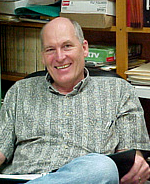
Environmental Microbiology
Dr. Gary Childers
Faculty Bio
Bacterial source tracking, enhancement of methanogens in coalbeds, and anaerobic microbial nutrient transformations using classical and molecular analyses.

Phylogenetic Systematics and Herpetology
Dr. Brian Crother
Faculty Bio
Evolution from a phylogenetic perspective; historical biogeography, historical ecology, patterns of gene evolution, patterns of species evolution, methodology and philosophy of phylogenetic analysis. In addition, engaged in survey work for the accumulation of long term data for amphibian and reptile populations in local wetlands.

Molecular Microbiology
Dr. Pradip Panta
Faculty Bio
Antimicrobial resistance is now considered as a third leading global cause of death after stroke and heart disease. My lab is broadly interested in understanding the molecular mechanism(s) of antimicrobial resistance. In particular, we are interested in understanding the role of environmental factors, such as pH and oxygen in developing bacterial resistance against cationic antimicrobial peptides, such as polymyxins.
Comparative Morphology
Dr. Chris Murray
Faculty Bio
I am focused on the comparative morphology and physiological ecology of vertebrates in temperate, Neotropical and subtropical coastal wetlands. My questions address how the physiology of individuals alters relevant morphology, population or community ecology. Recent research addresses the interactions among aquaculture practices, crocodile sex ratio biases, and endocrine disrupting compounds in Costa Rica. Research themes include physiological ecology that tends to incorporate population ecology, endocrinology, sex determination, stress physiology, and reproductive ecology. Further, I am interested in diagnostic and functional morphology, utilizing geometric morphometrics to identify diagnostic characters of undescribed and/or newly described species and assessing phenotypic plasticity in an ecological context. Lastly, I strive to contribute to biogeographic and evolutionary ontology and operation and novel metaphysical thinking regarding the existence and appropriate use of biological units.

Neurophysiology
Dr. John O'Reilly
Faculty Bio
Relationship between molecular structure and electrophysiological function in voltage-gated Na+ channels. Role of ion channels from excitable membranes in health & disease.

Ichthyology
Dr. Kyle Piller
Faculty Bio
Systematics, evolution, ecology, and conservation genetics of North American freshwater fishes. Recent work includes systematic and taxonomic studies of darters ( Etheostoma) and suckers ( Ictiobus and Carpiodes) and conservation genetics of lake trout.

Wetlands Science and Statistical Ecology
Dr. Gary Schaffer
Faculty Bio
Isolating the mechanisms responsible for wetland health and habitat-state change through mesocosm and field studies. Landscape-scale restoration of swamps and marshes, bioremediation of small-scale oil spills, statistical modeling of ecosystem dynamics.
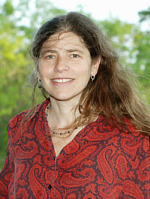
Molecular and Developmental Immunology
Dr. Penny Shockett
Faculty Bio
Lymphocyte development and differentiation, generation of antigen receptor diversity, DNA recombination and repair.
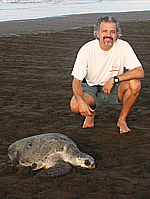
Vertebrate Physiology
Dr. Roldan Valverde
Faculty Bio
My main research interests are the comparative endocrinology of stress response, with
emphasis in freshwater and marine turtles, and the nesting ecology of sea turtles.
Currently, my lab is focused on three different projects:
Impact of salinity on the endocrine stress response of the freshwater turtle in the Lake Pontchartrain Basin, the development of a quantitative assay to detect endocrine disruption in the red-eared freshwater turtle, and the global estimate of mass nesting olive ridley sea turtles.

Molecular Systematics and Evolution of Development
Dr. Mary White
Faculty Bio
Systematics of squamates using multiple nuclear genes. Evolution of mechanisms of germ cell determination in vertebrates.
 Statistical Phylogenetics
Statistical Phylogenetics
Dr. April Wright
Faculty Bio
The Wright lab is interested in statistical phylogenetics, particularly the integration of molecular and morphological information to answer evolutionary questions. For more information, including opportunities for joining the lab, please visit the Wright Lab website.






